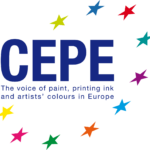In paint, the polymeric content of binders and certain additives used in paint may fall under the definition of microplastics.
These are synthetic polymeric particles smaller than 5 mm. While the binder typically makes up 35% of paint, the solid fraction makes up about 18% while the rest is solvent (e.g., water).
CEPE and its members are actively involved in gaining more knowledge on the contribution of paint to the microplastics problem and finding solutions. While the exact contribution of paint is unclear, the paint industry is committed to finding solutions through research, innovation, and user education.
Consumer awareness
When painting one can prevent the microplastics in liquid paint to enter the environment by for instance, preventing overspray or not flushing paint waste down the drain. CEPE and its members are committed to supporting education for end users.
CEPE and its members are committed to supporting education for end users.
Microplastics studies
Microplastic waste can form when a paint layer degrades due to weather exposure. However, there currently is no robust scientific data that can quantify the contribution of paint to microplastics pollution in the marine or terrestrial environment. Existing literature often uses a large set of assumptions, some of which are questionable and can lead to significant overestimations.
WCC literature report
CEPE has contracted one renowned research institute to conduct two studies on the degradation of façade and marine coatings and the emission of microplastics.

